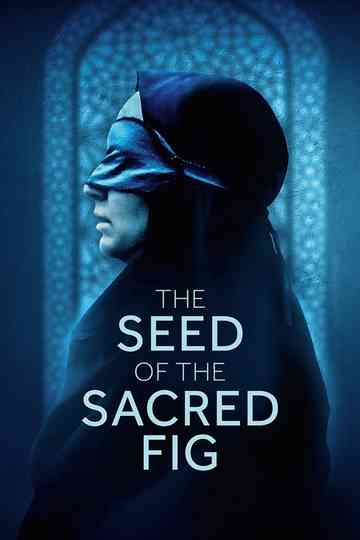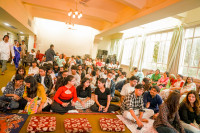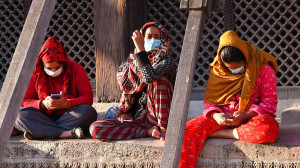Culture & Lifestyle
From screens to the streets
Mohammad Rasoulof’s ‘The Seed of the Sacred Fig’ mirrors not just Iran’s protests but the growing digital resistance seen among Nepal’s youth.
Sanskriti Pokharel
‘The Seed of the Sacred Fig’ begins in darkness. For a long time, there is nothing to see or hear. The stillness feels uncomfortable, as if the audience is being asked to sit in silence.
When light finally enters the screen, we see Iman (Missagh Zareh), a middle-aged man appointed as an investigator at the Revolutionary Court in Tehran. He receives a gun for self-defence, and this simple moment becomes the story’s foundation. The weapon he holds represents protection, but it also carries the shadow of power and fear. The exposition prepares us for a story where control, faith, and truth constantly collide.
The film takes place in 2022 during protests across Iran. Crowds gather in the streets and chant ‘Women, Life, Freedom’. The voices rise against a background of gunshots and sirens. Mohammad Rasoulof mixes fiction with real clips from the demonstrations.
The scenes appear through the perspective of smartphone screens, creating a sense of raw authenticity. People are seen running, falling, bleeding, and shouting. The camera shakes, the light flickers, and everything feels unfiltered. These clips are a difficult watch.
These videos resemble what Nepal saw on September 8 and 9. The same fear, urgency, and chaos can be felt in both places.
Another protest gradually unfolds inside Iman’s home. Iman’s wife, Najmeh (Soheila Golestani) and their two daughters, Rezvan (Mahsa Rostami) and Sana (Setareh Maleki), try to live a normal life while the country trembles outside.
The mother watches the news on television and repeats what she hears. The daughters scroll through their phones and compare information from independent sources. They argue about which version of the truth is real. This difference becomes one of the strongest themes in the film. The mother trusts the state, whereas the daughters question it. The living room turns into a small battlefield of belief.

Tension escalates in the movie after Iman’s gun disappears. The loss of the weapon shakes him deeply. He suspects everyone, even his own family. He searches their bags and rooms. The gun meant to keep him safe becomes the seed of doubt. He begins to treat his home like an interrogation room. The warmth between family members starts to fade.
Rasoulof directs the film with patience. He does not rush to show violence or loud emotion. He allows silence to speak. The house is filled with small sounds: a spoon stirring tea, a phone buzzing, a key turning in a lock. Instead of number of background music, these ordinary noises are employed, symbolising control and anxiety. Besides ordinary noises, the soundtrack includes religious songs and prayer calls. Their placement is deliberate. They remind us of how deeply faith and power are tied together.
The title, ‘The Seed of the Sacred Fig’, carries layers of meaning. In nature, a sacred fig tree begins as a seed that lands on another tree. As it grows, its roots wrap around the host and slowly suffocate it. Rasoulof uses this image to describe how systems of power destroy the people who support them.
Iman represents the host tree. The government that he serves wraps around him and his family, feeding on their loyalty. The more he obeys, the tighter the hold becomes. By the end, he is unable to separate his identity from his position. The seed has grown, and the host can no longer breathe. This title is no doubt a brilliant choice for the film.
The film’s visual style strengthens this metaphor. The spaces feel confined. The walls of the house seem to close in. Windows are covered with curtains, doors remain locked, and the outside world looks dangerous. The camera often focuses on faces, showing the smallest tremors of fear or defiance. The use of smartphone footage adds another texture. The shift from cinematic widescreen to the vertical shape of a phone feels natural.
In one scene, the daughters watch a clip of a protest where their friend is shot. The pain on their faces connects to the pain on the screen. The audience becomes part of this chain of witnesses.
There is a constant background noise of sirens, chants, and helicopters. Even when nothing violent is happening, the world outside never quiets. The sense of threat stays alive. Rasoulof’s direction does not allow comfort. He wants viewers to feel trapped like the characters. Time seems to move slowly.
The gender perspective in the film gives it another depth. Women lead the protests, and the daughters become the eyes through which the audience understands the movement. They are curious and brave. They do not carry weapons, but information. Their power comes from awareness. Najmeh, the mother, struggles between protection and freedom. She wants safety for her family, yet she begins to see that safety under oppression is another form of prison. Her realisation grows gradually, shown through subtle expressions rather than speeches.
Iman’s downfall is both personal and political. He begins as a loyal worker who believes he is doing his duty. As fear takes over, he becomes an image of the system: rigid, controlling, and afraid of truth. His transformation shows how power can destroy the oppressed and the obedient. By the end, once filled with family warmth, his home turns cold and silent. The missing gun remains a mystery, but its absence becomes symbolic.
The connection between the film and the current Gen Z movement in Nepal feels immediate. Gen Zs in Nepal have been using phones to record police actions, share live updates, and question authority. Their parents often watch state news that tells a different story. This divide mirrors the one inside Iman’s house. The older generation holds on to the belief that institutions must be trusted. The younger generation relies on their own eyes. In both societies, the screen has become a battlefield of truth. Rasoulof’s film captures that global reality where resistance is digital, and truth is constantly under attack.
The film does not offer a clear conclusion. It ends as it began, in darkness. It is difficult to watch, but its honesty makes it powerful. Though slow-paced, the film reflects the dragging uncertainty of life under oppression.
The film feels familiar to viewers in Nepal. It shows that the fight for freedom happens not only on the streets but also around dinner tables and in classrooms.
The Seed of the Sacred Fig
Director: Mohammad Rasoulof
Cast: Missagh Zareh, Soheila Golestani, Mahsa Rostami
Duration: 2 hours 48 minutes
Year: 2024
Language: Persian
Available on Amazon Prime Video




 11.12°C Kathmandu
11.12°C Kathmandu













%20(1).jpg&w=300&height=200)

